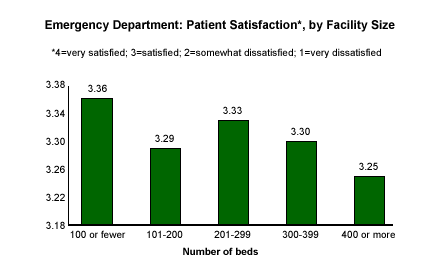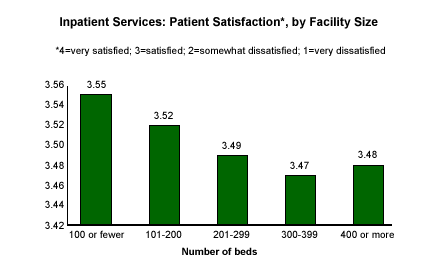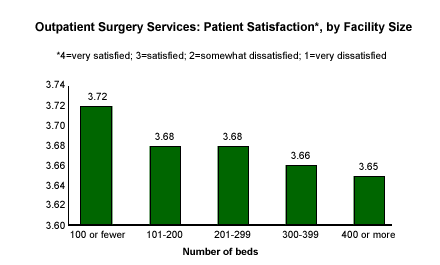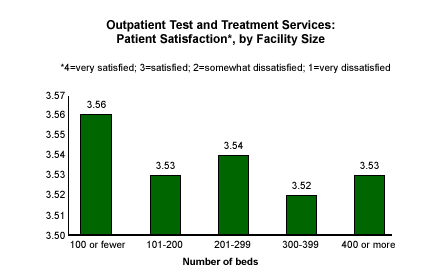Second in a series of articles on patient satisfaction by facility size.
As discussed in last week's article (see "Does Facility Size Color Patient Perceptions?"), there is no consistent relationship across service areas between facility size and trust in a facility's ability to consistently deliver high-quality service. But does a facility's size affect overall patient satisfaction with that service?
The logical response would be that it should. Large facilities have breadth and depth of services, and access to sophisticated and specialized technology that may be unavailable to small facilities. In most cases, these facilities are successfully positioned as "high tech." The logical way for smaller facilities to differentiate themselves is often by positioning themselves as "high touch," based on the personalized quality of their patient service. But do these theories hold true?
In general, Gallup finds only minor differences in overall patient satisfaction by facility size compared to the variation in patient trust. However, the strongest relationship between overall patient satisfaction and facility size -- which is found in the emergency department -- is worth examining.
Emergency Department
In the emergency department, there is little variation in overall satisfaction among mid-sized hospitals -- those with between 101 and 399 beds. There is more variation between smaller hospitals (100 beds or fewer) and larger hospitals (400 beds or more).

This variation may be driven in part by the speed and efficiency of service. Large hospitals are more likely to see severe trauma cases and life-threatening illnesses and injuries, so patients with minor conditions are more likely to be affected by a triage system. Severe conditions are likely to require extended treatment times, slowing turnover of beds. In addition, busy emergency departments often experience shortages of beds that are closely monitored or require other specialized services. Shortages of staff, antiquated facilities, and the rapid growth in volume of severely injured/ill patients may also affect larger facilities.
Inpatient Services
There is no real variation in overall patient satisfaction with inpatient services for facilities over 200 beds in size. However, hospitals with 200 or fewer beds tend to have higher levels of patient satisfaction. Although the variation is relatively small, it may represent a validation of the "high touch" versus "high tech" positioning.

Outpatient Surgery
While overall patient satisfaction scores do not vary greatly by size among outpatient surgery facilities, a direct linear relationship does occur by facility size. Smaller outpatient surgery facilities (100 beds or fewer) do receive higher patient satisfaction scores than larger facilities (400 beds or more).

Outpatient Test and Treatment
Patient satisfaction with outpatient test and treatment services also varies little by facility size. However, while patients showed the lowest levels of trust in facilities with 100 beds or fewer, these smaller facilities receive the highest scores on overall patient satisfaction.

Key Points
While there is no direct linear relationship between overall patient satisfaction and facility size across service areas, the trend for overall patient satisfaction is clearer than it is for patient trust. Facilities with 100 beds or fewer receive the highest overall patient satisfaction scores across service areas. The magnitude of variation by facility size is greatest among emergency departments and least among outpatient test and treatment services, suggesting that the level of variation by facility size may be tied to the intensity of services provided.
Next week, we will look at the impact of facility size on a patient's likelihood to return to a medical facility.